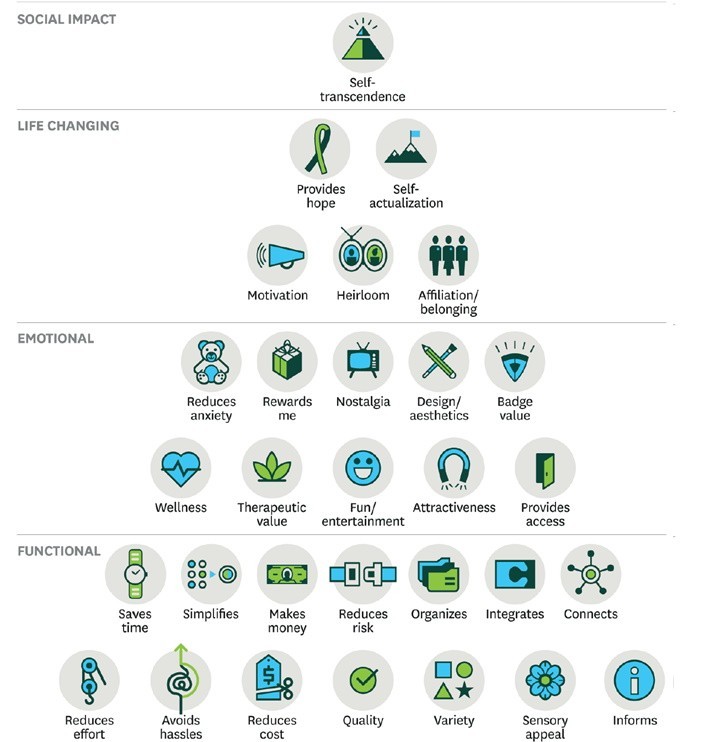In project management, we often say that our deliveries must add value to our business. But, after all, do you know what business value is? Are we correctly defining what types of values we should create? How do we measure this? Let’s discuss it.
In my previous article, I said that project selection should prioritize the expected benefits. Are these benefits business values? not always…
Many types of values
Frequently when we talk about business values, we are actually referring to customer values or user values.
The definition of business value varies from one company to another and from one context (economic, organizational, temporal, etc.) to another.
Delivering business value to a startup is not the same as for a governmental institution, that is not the same as a multinational company.
The Agile Manifesto states the “our highest priority is to satisfy the customer through early and continuous delivery of valuable software.”
Satisfy the customer? Why not the business or the user?
Valuable software? What is a valuable software?
In Scrum, we assume that the Product Owner is responsible to prioritize the product backlog based on business value.
So, we face a crossroads if the objective of agile development should focus on the business or the customers value? Is business and customer value the same thing? And, what about user values? Customer and user are the same person?
Let’s stop thinking only on financial values
When we talk about commercial value, we always think about ROI (return on investment). This is an indicator that shows the financial return of an investment. If it is positive, then we can go ahead … if it is negative … then the return does not justify the investment.
There are other quite common indicators, such as Net Present Value (NPV), Profitability Index, Internal Rate of Return (IRF) and payback period. All of this takes into account the financial analysis of the business value.
But, what if you are a non-profit organization? You should not be focused on your organizational profit but instead on creating values to your clients and donors.
Likewise, public institutions should also not have financial profit objectives, but values aimed at transparency, public accountability and public political objectives.
These are examples of organizations where the product owner must have a particular view on how to add value to projects.
Let me give you an even more radical example … imagine that your company has a goal to reduce by 10% the number of customers that provide the lowest profits.
In this case, the added value will be the reduction in the number of customers. I think that some of your customers will not be satisfied with this project. What would be the customer value in this case?
The elements of value
The value of the business should not be a priority measure, but something defined by top management on how to achieve the organization’s strategic objectives.
Abraham Maslow published in 1943 his famous Hierarchy of Needs pyramid. In it we can identify four levels of needs: psychological, security, belonging and love, esteem and self-realization.
Using the same logic, three researchers published an article in the prestigious Harvard Business Review listing 30 elements of values.
These elements are classified as functional, emotional, life changing and social impact.
Source: 2015 Brain&Company Inc.
According to the authors of this research, some elements matter more than others for companies.
Functional values are easier to measure quantitatively. The further we go to the top of the pyramid, the more difficult it is to measure added value quantitatively or even qualitatively.
Who is responsible for defining what has value?
If you are a fan of the scrum, you will respond without hesitation that is the product owner. If you are a traditional project manager, you will argue that the feasibility study will show the value of deliveries.
If you are a marketing or commercial professional, you should say that ‘the customer is always reason’ and he is the one who tells what has or not value.
If you work in the finance department, then the products with the highest or the fastest return of the investment are those that add the most value to the business.
And then there is the CIO who says that he is the only one that defines “what is best for the company”
Who’s right?
Here are my two cents – the business value is not a cake recipe that if you follow you will get a product at the end.
When defining a business value, we are addressing the ‘organisation’ otherwise we should say ‘customer value’ or ‘user value’.
So, what are the criteria that add value to the corporation? more money, more customers, more profit, more products, more visibility in the market, more return for shareholders, etc.
In the case of companies, this definition should not be restricted to the CIO or the Board of Governance. This is responsibility of the entire company. All employees should participate on defining what is the business value.
And do you know why? Because every worker should understand why they are working on a product or a project and what is the value of this product to the organisation.
I know that this article would raise many questions in your mind, but this is the goal… think about it.
Did you like it?
share it Didn’t you like it?
comment or leave your thoughts to improve it

Download your FREE ebook 'HOW TO BE A GOOD PROJECT MANAGER'
Best advices from 30 TOP influencers in project management


